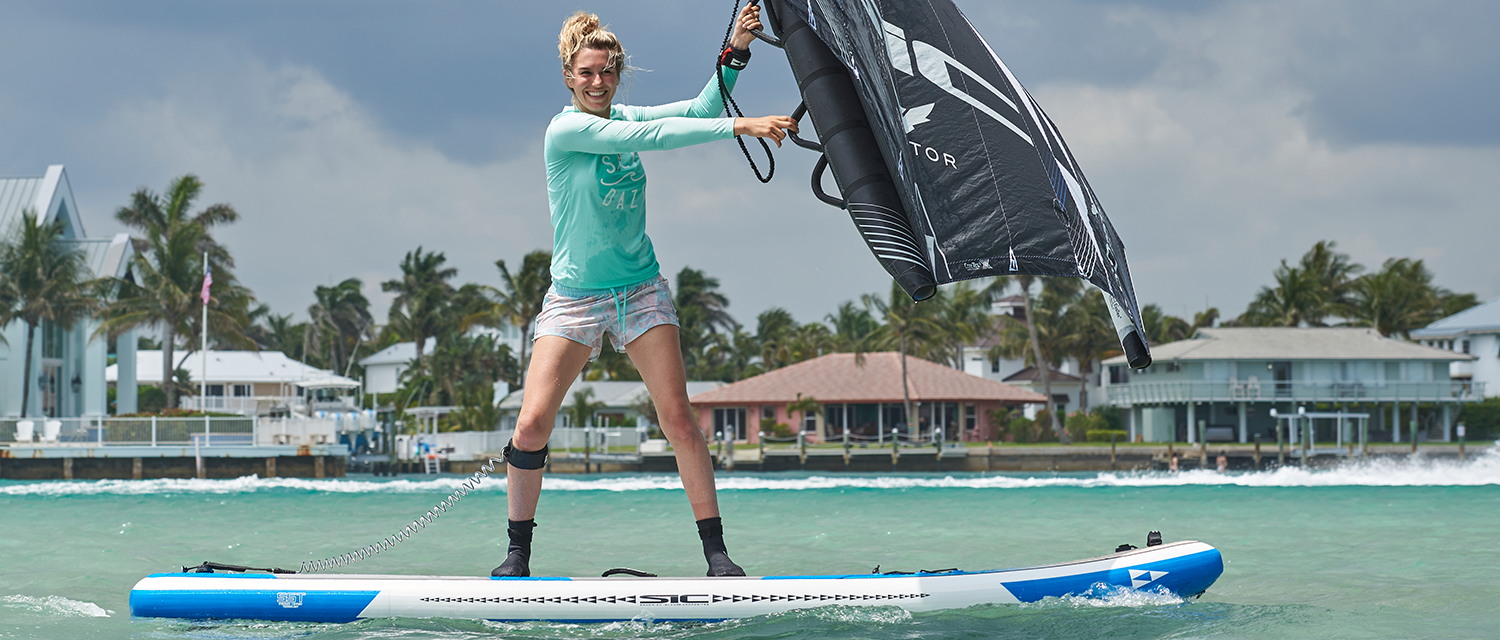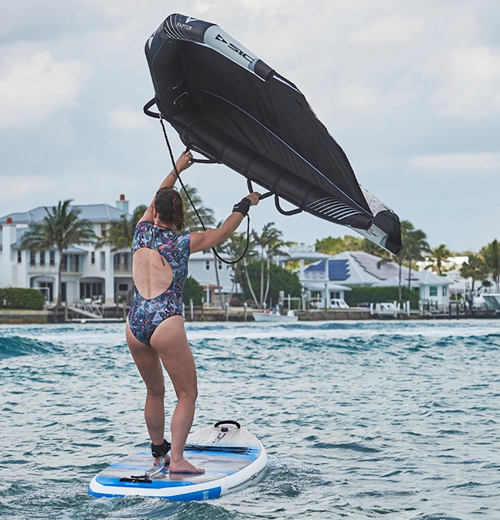

Stand-up paddling is an excellent way to explore the water and get some exercise while doing it. But we understand that paddling can become a chore when the wind is howling. What if we told you there was a way to ignite a new spark in your watersports journey? What if you could harness the wind and soar across the water? That's where SUP Winging comes in.


SUP winging is a relatively new sport that involves using an inflatable wing while standing on a paddleboard. It's a similar concept to windsurfing but without all the gear. The rider holds and controls the wing, which harnesses the wind to propel the board forward. Paddleboard with a center fin is highly recommended for better tracking and control.
One of the unique aspects of SUP winging is its versatility. It can be done on flatwater, and even in light winds, making it an accessible sport for all skill levels. It's a great place to start if you have no wind sports experience and want to transfer to a foil board. If keeping your board close to the water while soaring is more your speed, then SUP winging can be thrilling itself.
When learning to SUP wing, prior stand-up paddling experience helps with board balance and control. Wind sports knowledge is also a plus. However, wing management skills can quickly be learned. We suggest taking a lesson to shorten the learning curve and to learn how to self-arrest. Flying downwind is undoubtedly fun, but if you don't know how to make it back up wind, it can be a grind.
TAO Air Wind 10'6 inflatable paddleboard and a Raptor Wing is the perfect setup for SUP winging.
The 10'6" TAO Air Wind is a convertible inflatable paddleboard with ample stability for paddling without compromising performance in the wind.
A center and rear fin boxes offer better traction when in wind mode and a soft deck allows for forgiving falls. Its compact size and backpack carrying case make it perfect for travel and allow for compact storage.
The Raptor Wing's generates remarkable power for SUP winging. At the same time, its shorter wingspan minimizes the risk of the wing tip dragging in the water during power-ups, tacking, and jibing, making this a perfect wing for new flyers.
We suggest starting with a 4-5 meter wing which is enough to get average-size riders moving in 15 knots or wind. As you progress and gain experience, you may choose to go smaller, depending on the wind conditions and your preference.
4 TIPS FOR THE FIRST SUP WINGING SESSION
Practice wing handling on land before heading to the water
- Always put your wrist-leash before handling the wing.
- Practice holding the wing with a light grip and making minor adjustments.
- Get comfortable holding the wing in neutral (no power), learn the hand sequence to grab the strut handles, how to sheet in to power up, and move the wing through a jibe.
- Know how to turn your wing over when it flips upside down on the water.
Assess your wing SUP winging location
- Choose an enclosed location so you can't get blown out to sea, like a cove, lake, or shallow inlet.
- Know the wind forecast and the direction the wind could take you.
- Begin your SUP-winging journey in calmer waters with lighter winds.
Learn to self-arrest
- Learning to self-arrest on your knees and sail upwind.
- Learn to paddle to shore on your belly with the wing trailing behind.
- Practice bailing safely and getting back on the board.
Safety
- SUP wing with a buddy so you can call for help if you can't make it back.
- Always wear a PFD and leash to keep you attached to the board and to the wing.
- Be aware of other watercraft and obstacles in the area, and allow for plenty of space.
Lastly, take a lesson! Shorten your learning curve, learn to be safe, and add lots of smiles to your SUP winging journey!








